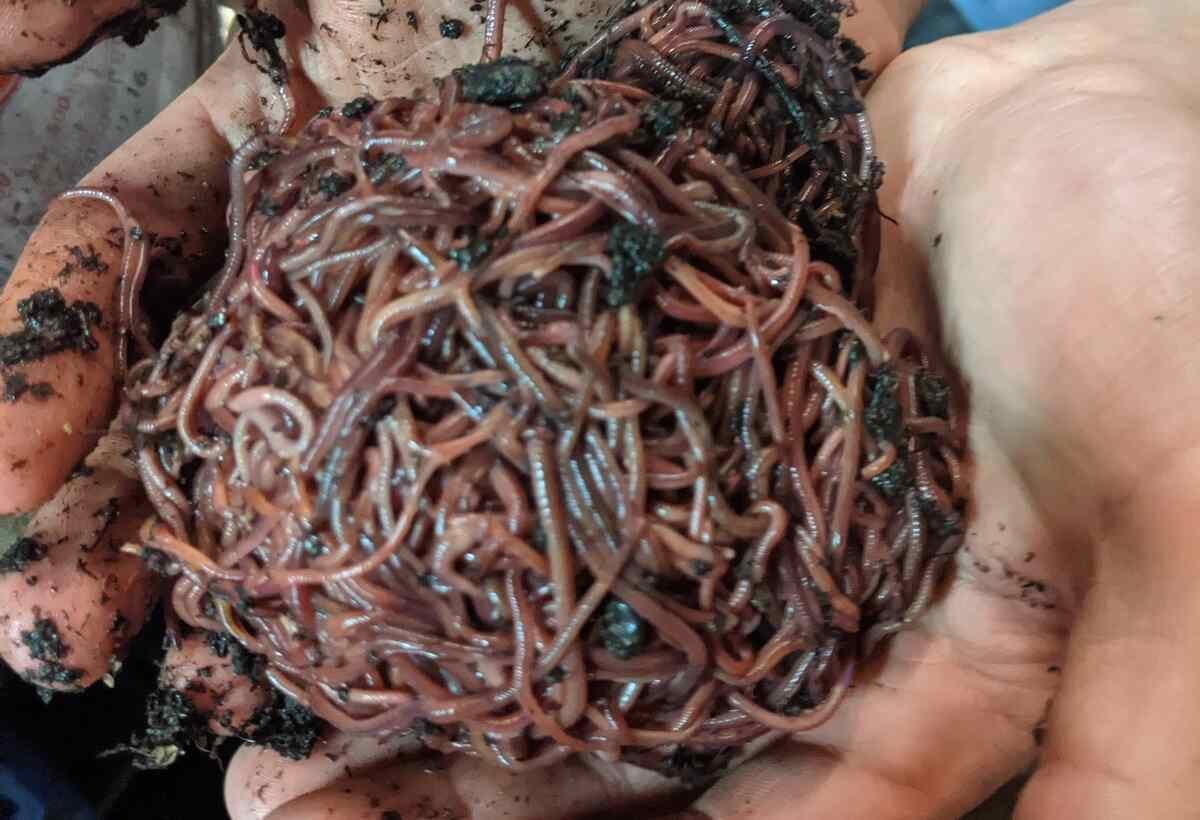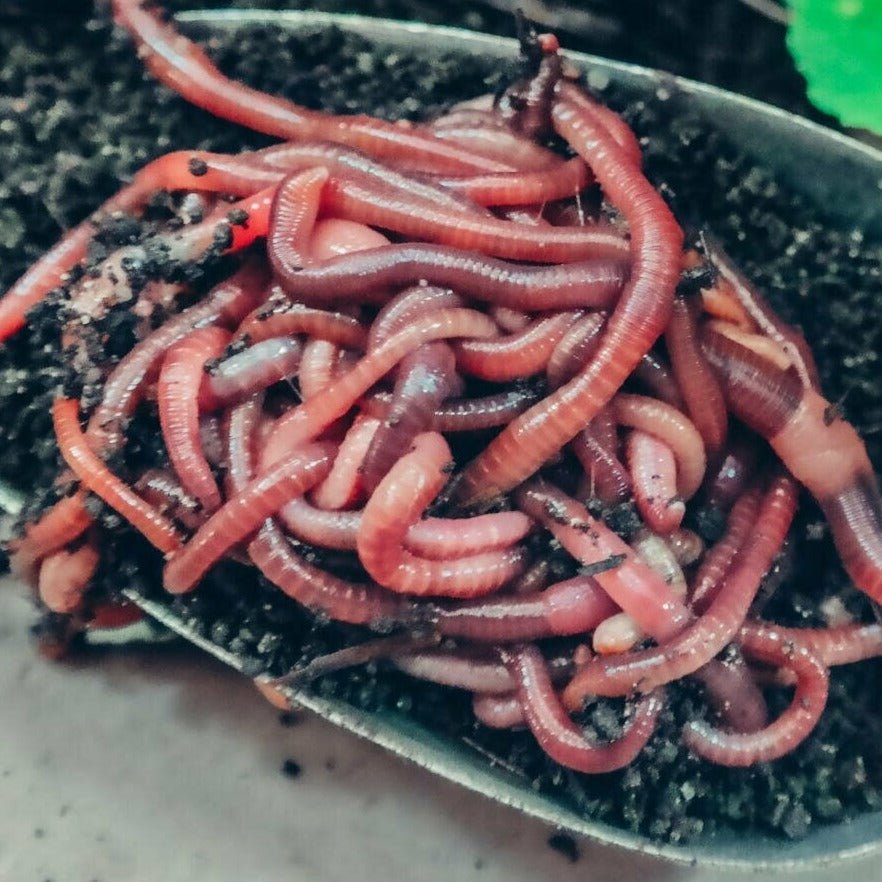How Red Wigglers Can Boost Your Organic Waste Recycling
Red wigglers stand for a crucial element in enhancing natural waste recycling, efficiently converting daily cooking area scraps and garden debris right into important worm castings. This procedure not just alleviates the volume of waste sent out to garbage dumps however additionally enhances dirt vitality, advertising healthier plant development without the demand for synthetic plant foods. Comprehending the complexities of developing a vermicomposting system and the ideal take care of these worms can substantially amplify the benefits. Yet, the concern remains: just how can one effectively integrate this technique into their regular to make best use of impact?

Benefits of Red Wigglers
Red wigglers, a sort of composting earthworm, offer countless benefits that make them invaluable in organic waste recycling. Their ability to consume a variety of organic materials makes them extremely effective decomposers. These worms can refine cooking area scraps, yard waste, and also paper items, transforming them right into nutrient-rich castings. This process not just lowers the quantity of waste sent to landfills yet likewise improves dirt health.
In addition, red wigglers improve dirt aeration and drain with their burrowing activities, promoting a much healthier origin setting for plants. Their castings are rich in beneficial bacteria and essential nutrients, fostering robust plant development and improving soil framework (red wigglers). The usage of red wigglers in composting is an environmentally friendly option to chemical plant foods, which can have harmful side effects.
In addition, vermicomposting with red wigglers is a low-maintenance and effective technique of recycling organic waste, making it available for homes and communities alike. Their rapid reproduction price makes certain a consistent supply for continuous composting efforts, additionally enhancing their benefits. Generally, red wigglers offer as a critical component in lasting waste monitoring and dirt improvement practices.
Establishing a Vermicomposting System
Producing an efficient vermicomposting system needs mindful preparation and factor to consider of various factors that contribute to its success. The structure of a successful system starts with selecting an ideal container. Alternatives vary from industrial bins to homemade alternatives, however it is critical that the container is well-ventilated and properly sized to suit the variety of red wigglers.
Following, the choice of bed linens material is vital. Suitable bed linen includes shredded newspaper, cardboard, or coconut coir, which supplies both a habitat and a source of carbon for the worms. The bedding must be dampened yet not extremely wet to protect against anaerobic conditions.
Maintaining the optimal environment is essential. Red wigglers grow in temperatures between 55 ° F and 77 ° F(13 ° C to 25 ° C )and require a pH degree around neutral. Checking dampness levels is also vital, as way too much wetness can bring about smell troubles, while inadequate can dry the worms.
Finally, placing the vermicomposting system in a shaded location protected from straight sunshine will assist preserve a secure setting. With these considerations in mind, one can successfully establish a flourishing vermicomposting system that enhances organic waste recycling.
What to Feed Red Wigglers
Feeding red wigglers the best products is fundamental to keeping a healthy and balanced vermicomposting system. These worms prosper on a varied diet largely composed of organic matter, which includes vegetables and fruit scraps, coffee premises, crushed eggshells, and shredded paper. It is important to prevent feeding them meat, dairy products, oily foods, or any type of refined things, as these can produce odors, bring in parasites, and lead to read this article an undesirable atmosphere.
A balanced diet regimen for red wigglers promotes optimal digestion and nutrient production. Purpose for a mix of environment-friendly products, high in nitrogen, such as vegetable peels and lawn cuttings, and brownish materials, abundant in carbon, like dried out leaves and cardboard. This balance ensures a lasting food source while maintaining wetness levels in the worm container.
Moreover, it is suggested to cut or shred bigger scraps to speed up disintegration and make the food a lot more obtainable to the worms. On a regular basis keeping track of the intake rate will aid establish the suitable amount to feed, stopping overfeeding and maintaining a thriving ecological community. By providing an appropriate diet plan, you not just sustain the health of red wigglers however also enhance the effectiveness of your vermicomposting efforts.
Preserving Your Worm Container
To make sure the wellness and efficiency of your vermicomposting system, maintaining your worm bin is important. If it becomes too damp, excess dampness can lead to anaerobic problems, damaging your worms.
Severe temperatures can stress or kill your worms. To attain this, put your container in a climate-controlled environment away from straight sunlight or heat resources.
Aeration is crucial for oxygen circulation. Carefully turning the bed linen with a yard fork every couple of weeks will assist aerate the product and stop compaction. Additionally, be vigilant regarding the bin's smell. A nasty scent might show overfeeding or a discrepancy in the carbon-to-nitrogen proportion. If this occurs, lower feeding and add more carbon-rich materials like shredded paper or cardboard.
(Worm Farms Near Me)
Making Use Of Worm Spreadings in Horticulture

Worm spreadings, often referred to as "black gold" by garden enthusiasts, are a very nourishing natural plant food that can significantly boost soil wellness and plant growth. These spreadings are generated by red wigglers as they absorb raw material, resulting in a rich, dark, crumbly substance brimming with helpful microorganisms.
Including worm spreadings into garden soil enhances its framework, aeration, and dampness retention, creating an optimal environment for root development. The high nutrient material of worm castings, consisting of nitrogen, phosphorus, and potassium, adds to strenuous plant growth and boosted yields. In addition, worm spreadings contain important trace minerals and enzymes that advertise the overall health of plants, allowing them to much better hold up against parasites and diseases.
Worm spreadings can be applied directly to the soil or blended into potting mixes for container gardening. A slim layer spread over garden beds or added to compost heaps can likewise improve the microbial activity and nutrient account of the garden compost. As a sustainable and eco-friendly plant food choice, worm castings support organic horticulture methods while minimizing reliance on artificial fertilizers, thereby fostering a much healthier environment.
Final Thought
Finally, the assimilation of red wigglers right into natural waste recycling methods provides a practical service for boosting dirt health and promoting sustainable horticulture strategies. By effectively disintegrating cooking area scraps and garden waste, red wigglers contribute to nutrient-rich worm castings that boost dirt oygenation and moisture retention. This green technique not just lowers landfill payments however also decreases the dependancy on chemical plant foods, ultimately fostering healthier communities and accountable waste administration techniques.